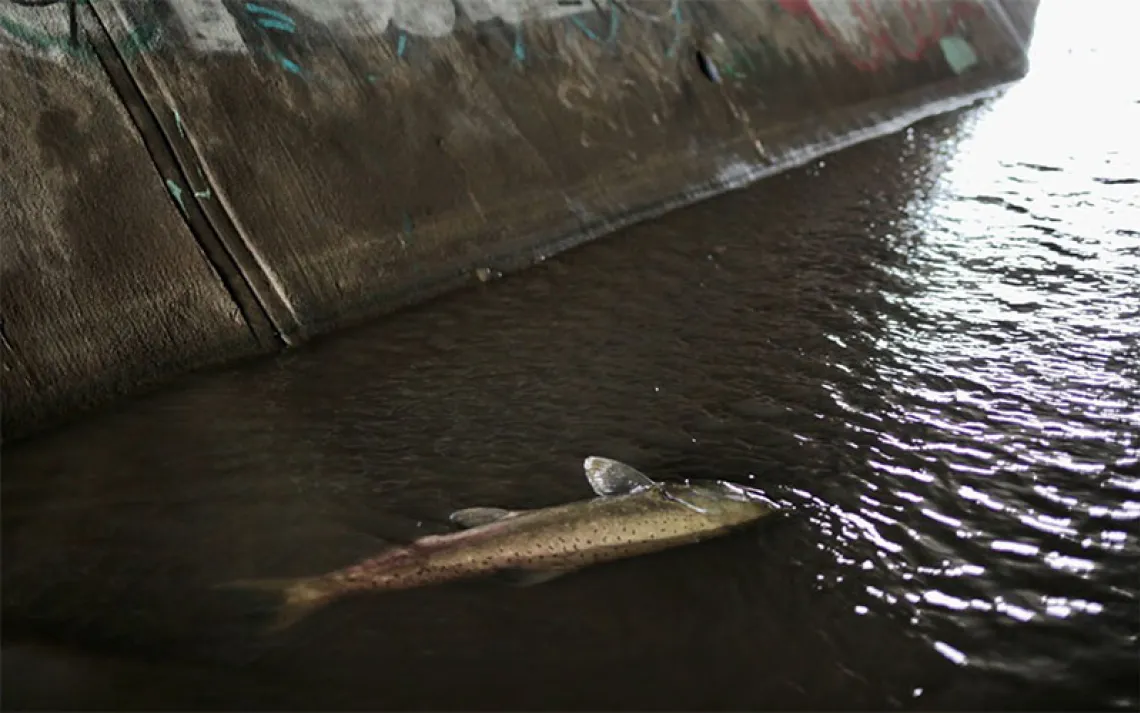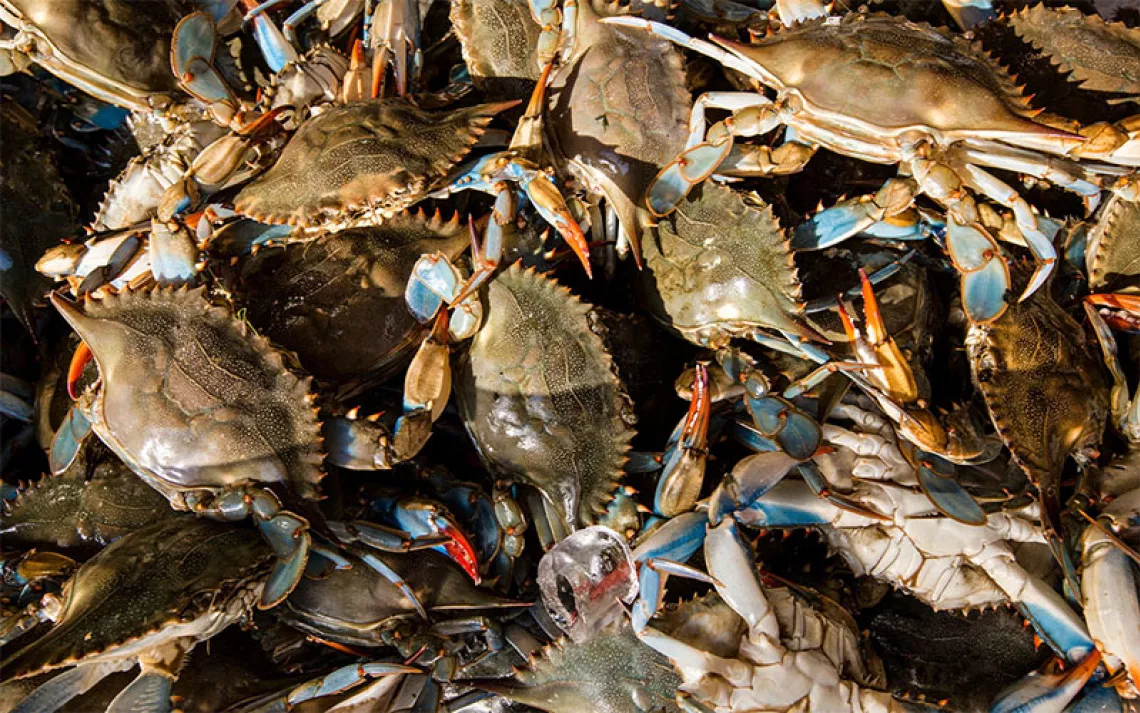How Many Beefalo Is Too Many Beefalo?
Sharpshooters, the Grand Canyon, and the beefalo management quandary
The sight of bison grazing on the Kaibab Plateau, on the north rim of the Grand Canyon, conjures iconic images of the western frontier. But the animals are the descendents of a group that was shipped to the region by rail more than a century ago and cross-bred with cattle. Today, many conservationists derisively refer to them not as bison but as “beefalo,” or “cattalo.”
The herd once lived on the high desert of House Rock Valley, but about a decade ago they left for the green grass of the Kaibab and the safety of Grand Canyon National Park, where they’ve multiplied prolifically, trampling plants, muddying springs, and scratching themselves on ancient stone ruins. They have officially worn out their welcome. The question of what to do about them has been a matter of fierce debate.
This fall, after years of philosophical, political, and policy discussion, Grand Canyon National Park will begin trapping the animals and giving them to out-of-state Native American tribes. After that, they’ll bring in volunteer sharpshooters.
No matter what happens, someone is going to be unhappy.
Hunters, who pay $3,350 to $5,400 to hunt the animals on Forest Service land, would like the animals to stay. Tourists, who enjoy watching them and snapping photos of them, would also like them to stay. Most conservationists think the beefalo should be removed from the Kaibab Plateau entirely and that hunting is hurting more than it is helping, since the beefalo retreat into the park when hunters appear. Even trapping is controversial. In Yellowstone National Park, which also struggles with a rapidly growing bison population, captured bison have been released from holding pens in the dead of night.
Tom Olliff, project leader for the bison reduction plan, said he considers 2018 as a "pilot year.” Yellowstone and Theodore Roosevelt National Parks have both held elk culls and been trapping hundreds of bison per year for years, and Olliff said the plan at the Grand Canyon leans heavily on policies those parks have developed. “I feel good about the progress we are making, he said, “but we still have to get in the field and do it.”
***
The Grand Canyon bison were brought to Arizona by Charles Jesse Jones, a rancher, hunter, expert roper and buffalo skinner who saw the slaughter of the plains bison herds firsthand. Biologists estimate that 30 to 60 million buffalo once roamed North America, but in the 1800s, commercial hunters began slaughtering them for hides—a maneuver that was endorsed, and sometimes enabled, by the U.S. military, which was at war with the buffalo-hunting Plains tribes.
By the early 1900s, a small herd remained at Yellowstone. The rest lived in zoos, on private ranches, or across the border in Canada. In 1905 and 1906, Buffalo Jones shipped some bison to Utah by rail and drove them to the Grand Canyon National Game Preserve in Arizona. The herd soon moved from the meadows and high-elevation forests of the Kaibab Plateau to the high desert of House Rock Valley, just north of the Colorado River.
Buffalo Jones believed in bison conservation, but he also believed buffalo genes could create livestock with the best of both species: the hardiness of a bison with the docility of cattle. Untroubled by a background in genetics or modern ideas about ecology, Jones freely experimented with cross-breeding cattle and bison. Jones succeeded in breeding the animals, but the venture failed financially. He left the herd to his partner, who also gave up on the buffalo business. The state of Arizona took over management of the herd around 1925.
In 1950, the Game and Fish Commission entered into an agreement with local ranchers, the Forest Service, and the Bureau of Land Management. In it, the agency agreed "to keep the buffalo confined to their designated range," a couple of grazing allotments in House Rock. At the time, the Game and Fish Commission kept the herd at 90 to 100 animals by regularly corralling the animals and allowing permit holders to shoot them. But, the "corral shoots" ended in 1972, wrote David E. Brown in Bringing Back the Game, a history of Arizona wildlife management, "when public pressures demanded that the department provide a more sporting-like atmosphere in more natural surroundings."
A more sporting hunt, with tag holders pursuing the animals on open ground, proved less effective at keeping numbers down. Experienced buffalo handlers moved on, fences fell into disrepair, and the herd left House Rock Valley and returned to the Kaibab Plateau.
Much of the Kaibab is managed by the Forest Service, where hunting is legal. The rest belongs to the Park Service, where it is not. The plateau’s combination of grasslands and thick forests made it difficult to keep track of the animals, and the safe haven the park provided gave the herd a place to retreat from hunters.
When she began working at Grand Canyon National Park in 2007, says Martha Hahn, former chief for science and resource management, about 50 bison lived in the area. Now, she says, that number could be as high as 800.
As federal lands agencies and the Arizona Game and Fish Department talked about bison management, the discussion grew heated. Were they bison or cattle? Are bison native to Arizona? Do they belong in a national park that was outside their former range?
Although it could be argued that Arizona Game and Fish lost its authority to manage the herd when it lost control of the beefalo in the 1990s, it has remained active in the discussion. A few years ago, Game and Fish began to lobby for opening the park to hunters. Conservationists argued that turning hunters loose in the park was a bad idea and preferred an organized cull with trained sharpshooters. (The Sierra Club’s official stance on the issue supports nonlethal removal of the Kaibab beefalo to locations where they can’t migrate back to the park.)
At first, says Hahn, the conversation was about how to get rid of the bison. But their popularity with park visitors made some officials reluctant to remove them entirely. Hahn says that if giraffes showed up at the Grand Canyon, they would be popular, too. But the conversation shifted. Now the discussion was about how many would be allowed to stay.
***
This fall, after the park closes down for the winter, the Park Service will bring in volunteer hunters to begin culling the herd. A cull differs from a hunt in several ways. The hunters won’t be able to keep the head or the hide as a trophy. They must pass a marksmanship test and be in good shape–the work will involve lots of walking and likely last for a week, from sunup to dark.
Hahn says that it’s likely that as soon as shooting starts, the bison will flee. The volunteers will have to follow, perhaps driving them farther into the park and below the rim of the canyon, where they will be more difficult to follow. Elk culls in other parks have not been very effective in reducing herd size, Hahn said. “What they’ve found is that it’s really labor intensive. It takes a whole lot of energy and time and money.”
The cull may prove to be controversial with antihunting groups, but Olliff is optimistic. The park will have experienced bison handlers on loan from other parks during the trapping phase. And although the beefalo have learned to avoid hunters, Olliff said that about 40 or 50 animals are killed through the Game and Fish hunts each year. If a lethal cull eliminates another 40 or 50, the park could reduce the herd by about 150 animals during the pilot phase of the program.
The goal is to get the herd down to 200 animals in three to five years. It’s possible that most of the reduction will ultimately be done by trapping. Either way, more delays could mean the herd will grow even more. Even if the hunt is a success, the herd is so prolific that this cull is unlikely to be the last one.
“They don’t reduce their numbers themselves,” Olliff said. “We’ve got a lot of work to do.”
 The Magazine of The Sierra Club
The Magazine of The Sierra Club




